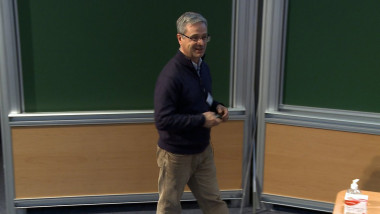
Impact and Legacy of the 2010 Paper on Self-force and EOB
By Leor Barack

A Space Test of the Equivalence Principle with MICROSCOPE
By Manuel Rodrigues
By Tamás Bodai
Appears in collection : 2019 - T3 - WS1 - Nonlinear and stochastic methods in climate and geophysical fluid dynamics
Persistence or regime behaviour is a common effect, which might emerge from the multistability of an underlying low-dimensional dynamics with a perturbation superimposed. Transition paths might be actually quite restricted, in association with the stationary measure of the dynamics. I will consider the case when the underlying low-dimensional dynamics features a fractal basin boundary, which embeds a chaotic saddle. The fractality of the basin boundary might be filamentary or "rough", or a mixture of these. The perturbed stationary measure can be predicted by large deviation theory, in terms of a so-called nonequilibrium potential based on the unperturbed dynamics and a correction to it, which selects specific instantons as most probable transition paths. The potential difference between the potential well and a saddle will also determine the expected sojourn or exit time. I will present an efficient algorithm to determine this potential difference from exit time data when the perturbation strength is under the control of the experimenter.
